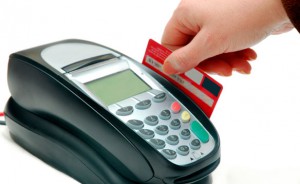[fusion_builder_container hundred_percent=”no” equal_height_columns=”no” hide_on_mobile=”small-visibility,medium-visibility,large-visibility” background_position=”center center” background_repeat=”no-repeat” fade=”no” background_parallax=”none” parallax_speed=”0.3″ video_aspect_ratio=”16:9″ video_loop=”yes” video_mute=”yes” border_style=”solid”][fusion_builder_row][fusion_builder_column type=”1_1″ layout=”1_1″ background_position=”left top” background_color=”” border_size=”” border_color=”” border_style=”solid” border_position=”all” spacing=”yes” background_image=”” background_repeat=”no-repeat” padding=”” margin_top=”0px” margin_bottom=”0px” class=”” id=”” animation_type=”” animation_speed=”0.3″ animation_direction=”left” hide_on_mobile=”small-visibility,medium-visibility,large-visibility” center_content=”no” last=”no” min_height=”” hover_type=”none” link=””][fusion_text]
Most of the time, credit card processing fees are simply a cost of doing business. For a number of reasons, consumers, businesses and government agencies alike often prefer paying with credit cards. As a result, credit card purchases may account for between 65% – 100% of a company’s sales and thousands of dollars in processing fees each year. So, why not learn how to save money on your merchant account?
How Credit Card Processing Works, and Why Fees Vary
Before we go into how to lower your fees, it’s important to understand what fees are being charged to you. Basically, you pay two sets of fees:
- An interchange fee, which is the fee the credit card companies charge for each transaction. This fee is set by the credit card networks (Visa and MasterCard) and split between the networks and the credit card-issuing banks. Interchange a percentage of the total volume of a transaction plus a small, flat per-transaction fee (usually around 10 cents). The exact percentage of the transaction varies according to a wide range of specific criteria such as the type of card used, what is being purchased, who issued the card, and how the card is processed.
- An additional fee (discount) charged by your merchant service provider, which may be the merchant bank (the bank that provides the merchant account that allows you to accept credit cards) or an authorized independent sales organization (ISO) of the merchant bank. This fee is also a percentage of the transaction and may also include a per-transaction amount.
Although it isn’t widely known, you can cut your costs on both discount fees and interchange fees. Many characteristics of the how a given card is charged–who issued the card, the type of card, and other static factors–can’t be changed. However, there is one factor that gives merchants a good deal of control over their own pricing.
It’s how you process your credit card.
Here are three ways merchants pay too much on their interchange fees, which typically make up the bulk of their total fees
- Merchants in card-not-present environments key cards into physical terminals. This provides minimal information to the parties that require it, and for that, you pay a premium. This is the number one way merchants suffer.
- You might preauthorize a credit card and then wait too long to apply the charges. After three days, the card may automatically default to a “standard” rate of 2.95%.
- Your virtual gateway may not be able to provide the necessary information to obtain the best base costs for you. This is similar to point 1.
And, here are three ways to alleviate those problems:
- Rather than using a physical terminal to key in cards, use either a virtual gateway or an accounting system integration, which can not only lower your costs but save you valuable time every day by automatically marking your invoices as paid. In some cases, the amount of time saved is even more valuable in dollars than the card re-qualifications, which the integration and virtual gateway can also take care of. Century provides integrations to QuickBooks, Sage 50 (Peachtree), Sage 100 (MAS 90 and MAS 200), Sage 500 (MAS 500), NetSuite, Macola, SAP Business One, Microsoft Dynamics NAV (Navision) and quite a few other accounting systems. (If you feel you’re being overcharged on your base costs, click the appropriate link and we’ll see if we can help you.)
- Use a virtual terminal to schedule payment drops and ensure that pre-authorized cards don’t get moved to the “standard” 2.95% rate. Our payment gateway, EBizCharge, can be used specifically for this purpose.
- EBizCharge is also programmed to pass the information that provides lower base costs, in addition to adding security to your transactions with tokenization.
Other contributing factors:
Qualified Confusion
Adding to the difficulty in determining exactly how to save money on your merchant account, is the qualification system that’s used to categorize transactions and determine the underlying interchange rate on each sale.
“There are over 125 interchange categories that each have different fees based on how the card is processed, what kind of card is being used, the nature of the merchant’s business, and other factors,” explains Henry Helgeson, CEO of Merchant Warehouse.
“What small to mid-size accounts don’t realize,” Helgeson says, “is that many merchant service providers condense these 125-plus categories into three tiers called Qualified, Mid-Qualified and Non-qualified. They average out the many interchange rates in each tier, then add a margin.”
Under this kind of system, the averaged tier rate is often higher than the actual interchange rate would be for an individual transaction. That’s something like putting a dollar bill into a vending machine to buy a 75 cent piece of candy and not getting any change. Three-tiered systems are usually not the best system to save money on your merchant account.
In order to save money on your merchant account, you need to take a look at the margin in your fees. Sometimes that margin can be quite substantial, resulting in a “discount rate” to the merchant that’s double or more than double the interchange rate. “The mid and nonqualified interchange rates may only go up a few basis points on MasterCard, but may increase by 200 basis points on the processor side,” explains Helgeson. “So, the merchant might be paying up to 3.5% and 35 cents per transaction.”
Size Matters. So does Age.
The bigger the company and the higher the total dollar amount of transactions processed each month, the more room there is to negotiate and save money on your merchant account. Businesses doing about $20,000 or more a month in transactions should be able to negotiate something known as an interchange plus fee. Under this system you pay the actual interchange rate for the classification of transaction, plus a flat additional fee. We would highly recommend this system to save money on your merchant account.
Smaller businesses, and businesses new to processing credit cards, will usually have to settle for some sort of three-tiered pricing structure (qualified, mid-qualified and non-qualified rates), but that doesn’t mean you have to settle for sky-high discount rates. In order to save money on your merchant account, you must talk to several merchant services providers and negotiate the best possible rates before making your final decision.
Service is Critically Important, Too
Avoid dealing with independent sales people who know little about the credit card processing industry or your industry. Instead, look for larger organizations that understand your industry and the credit card processing industry and that has the staff available to offer support when you need it. These are the companies that will help you save money on your merchant account.
“Ask questions — and use common sense,” says Helgeson. “Call the contact a couple of times and see if your call gets answered immediately or if you get voice mail. If it’s 5 pm and you have a queue of cars waiting to exit and your terminal goes down, you don’t want voice mail. You need someone to solve the problem right away.” These are some great pointers that will be added benefits to how you save money on your merchant account.
Avoid Leases for Low-Cost Equipment and Software
The equipment or software to process credit cards for small businesses can usually be purchased for as little as $100 to $400. But some salespeople will try to talk you into leasing the software or equipment. Don’t do it. The only one who benefits from this type of lease is the salesperson who gets a fee for selling you the lease. A lease on a $400 piece of equipment is usually non-cancellable and can wind up adding $1,000 or more to the actual price of what you leased. You can easily save money on your merchant account by purchasing a terminal outright. Even if you need to switch processors in the future, most processors and simply download your already owned terminal.
Read the Fine Print to Save Money on Your Merchant Account
To save money on your merchant account, carefully read all applications, forms and contracts mailed. Read all of the small print. Find out if you’ll have to pay any penalties if you want to change processors or stop accepting credit cards. Many merchant services providers include a penalty clause in their contracts that kicks in if you want out in less than two to three years. Be sure all fees listed in the contract are the same as what you were quoted. If there’s ever a dispute, the issue will be decided on the basis of the printed contract, not what you say the salesman told you on the telephone. You have to know the facts if you want to save money on your merchant account.
[/fusion_text][/fusion_builder_column][/fusion_builder_row][/fusion_builder_container]




